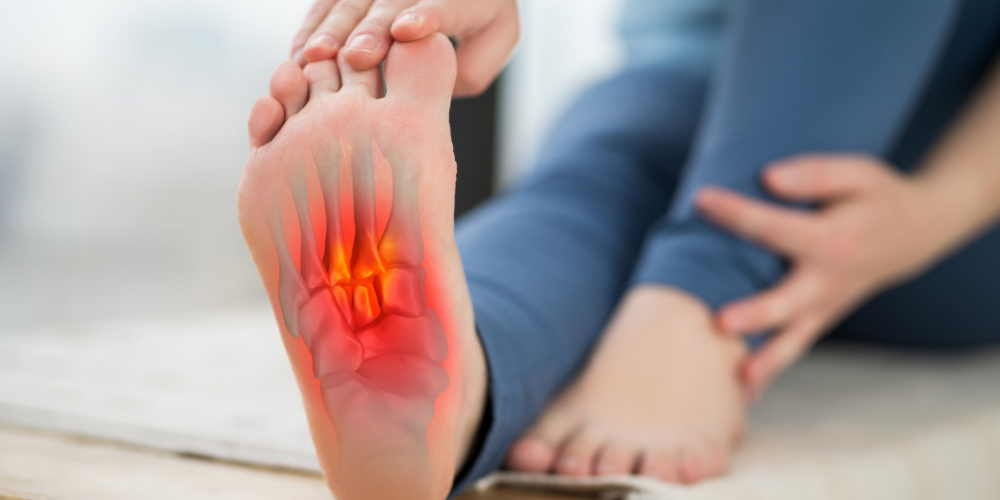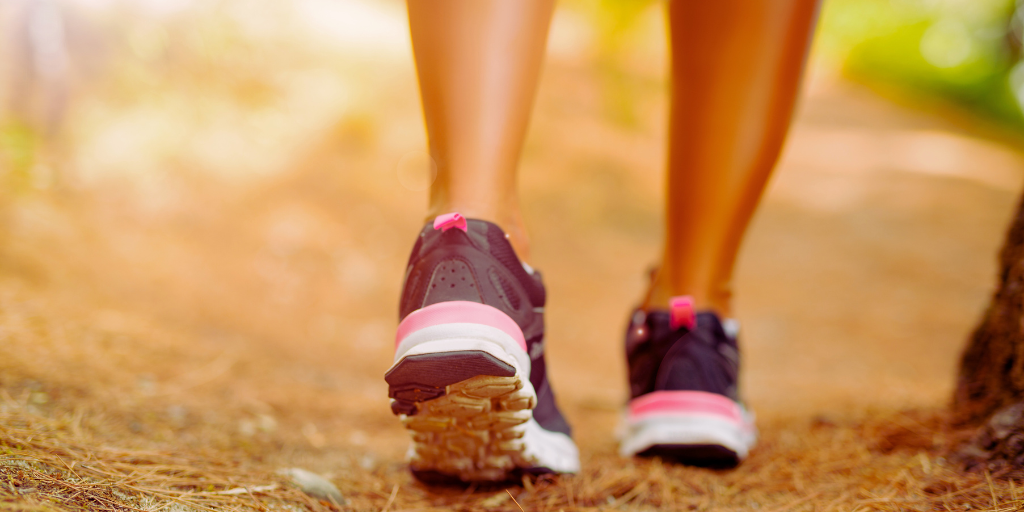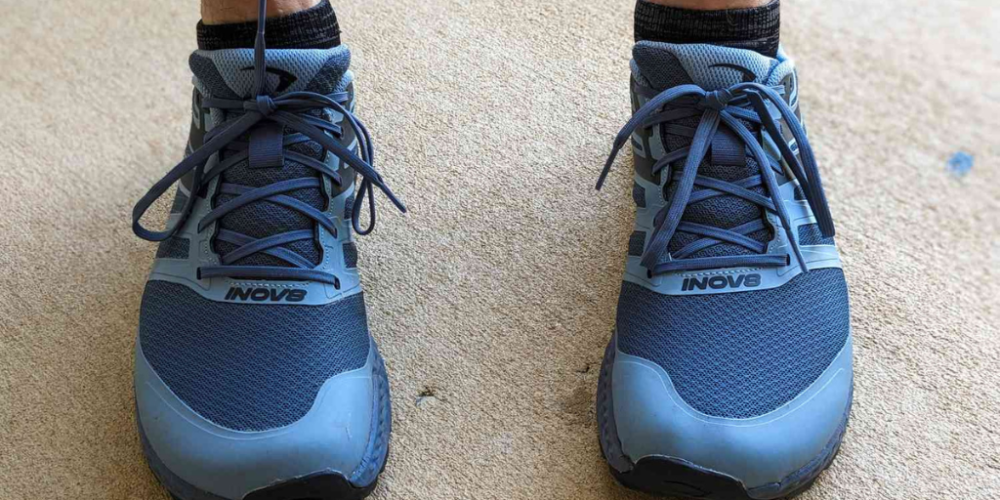
What if I told you that the shoes you choose every single day could be the root cause of your back pain, your poor balance, and could even be impacting your mental health? It sounds dramatic, but the connection between our feet and our overall well-being is one of the most overlooked aspects of modern health. We spend so much time thinking about diet and exercise for our heart and muscles, but we completely neglect the very foundation we stand on. We cram our feet into shoes that are more like coffins than functional equipment, slowly deforming their natural structure and setting ourselves up for a cascade of problems down the line.
As a health educator, I’ve seen countless people suffer from issues that all trace back to their feet. Today, we’re diving deep into the wisdom of Dr. Courtney Connley, a world-renowned foot doctor who is sounding the alarm on our footwear choices. You’re about to learn why one in three people will experience debilitating foot pain and how this isn’t just an inconvenience—it’s a serious threat to your mobility, your independence, and your longevity. This isn’t about scaring you; it’s about empowering you. By the end of this article, you’ll understand how to reclaim your foot health, rebuild your foundation, and unlock a healthier, more active life.
Key Takeaways
- Your Shoes Are Deforming Your Feet: Most modern shoes, with their narrow toe boxes and heel lifts, are fundamentally mismatched with the natural shape of the human foot, leading to weakness, pain, and conditions like bunions and hammer toes.
- Foot Pain is a Red Flag for Your Entire Body: Your feet are connected to the rest of your kinetic chain. Pain or dysfunction in your feet can manifest as knee, hip, and back problems. It’s a window into your body’s overall mechanics.
- Walking is a Superpower: Increasing your daily step count is one of the most powerful, accessible tools you have. A 1,000-step increase can reduce all-cause mortality by 15%, and walking more can significantly lower your risk of depression and dementia.
- Functional Footwear is Key: The three non-negotiables for healthy shoes are a wide toe box that allows your toes to splay, a zero-drop (flat) platform, and a flexible sole that allows your foot to move naturally.
- You Must Actively Strengthen Your Feet: Just like any other part of your body, your feet have muscles that need to be worked. Relying on supportive shoes and orthotics without strengthening the foot is a recipe for long-term problems.
1. Your Shoes Are a “Casket” for Your Feet

Take a look at your shoes. Now, take a look at your bare foot. Do they look anything alike? For most people, the answer is a resounding no. The widest part of a healthy, natural human foot is the toes. Yet, the widest part of most shoes is the ball of the foot, with a toe box that tapers to a point. From a very young age, we begin to force our feet into these unnaturally shaped boxes. The statistics are staggering: around 70% of children are wearing shoes that are too narrow. This is where the problems begin.
When you consistently squeeze your toes together, you are fundamentally changing the structure of your foot. Think about it: if you wore a sling on your arm for ten years, would you expect your bicep to be strong? Of course not. You’d lose mobility and the muscle would atrophy. The same principle applies to your feet. By constraining them, you’re preventing the four layers of intricate muscles within them from doing their job. This leads directly to common, painful diagnoses like bunions (the bump on the side of your big toe), hammer toes (the clawing of your smaller toes), and neuromas (painful nerve irritation between the toes). Your foot starts to look less like a foot and more like the shoe it’s been trapped in. The first, and perhaps most important, step you can take is to choose footwear that respects the natural shape of your foot.
2. The Hidden Dangers of Cushioning and Heel-Lift

Many of us are drawn to shoes with thick, pillowy cushioning. When you try them on in the store, they feel amazing, like walking on a cloud. But there’s a trade-off. Your foot is a sensory organ, packed with thousands of nerve endings that are constantly sending information to your brain about the ground beneath you. This feedback is crucial for balance and stable movement. The more cushion you put between your foot and the ground, the less you feel. You’re dulling this vital sensory perception, and your body has to compensate, often in ways that can lead to injury.
Even more problematic is the heel-to-toe drop found in most athletic and dress shoes. This means your heel sits higher than your toes. Even a small elevation is like wearing a mini high heel. Your body is designed to stand on a flat surface. When you elevate the heel, you shift your center of gravity forward, putting immense pressure on the front of your foot. More importantly, you shorten the muscles and tendons in the back of your leg, like your calf and Achilles tendon. Over time, this chronic shortening can contribute to everything from Achilles tendonopathy to plantar fasciitis and even low back pain, as your entire posture is thrown out of alignment.
3. Foot Pain Is a Whole-Body Problem

It’s a common mistake to think of foot pain as just a local issue. Dr. Connley emphasizes that your foot is a window into what’s happening throughout your entire kinetic chain. When she sees a patient with bilateral bunions (meaning on both feet), her first question isn’t about their shoes; it’s about what’s happening at their hips and pelvis. A forward tilt in your pelvis causes your arches to drop. Tucking your pelvis under causes them to lift. There is a direct, undeniable connection.
This interconnectedness means that a weak or dysfunctional foot can send shockwaves up your entire body. The way your foot unlocks and absorbs force impacts your ankle, which impacts your knee, which impacts your hip, and so on, all the way up to your back. This is why ignoring foot problems is so dangerous. It’s not just about the pain you feel today. It’s about your risk of falling when you’re older, your balance, and your ability to stay active without developing compensatory injuries in other parts of your body. Paying attention to your feet is paying attention to your entire structural health.
4. The Underestimated Power of Walking

In our world of sedentary jobs and convenient transportation, walking has become a lost art. Dr. Connley calls it “the most underrated, underutilized, easily accessible activity that most of us are not doing.” The research backs this up with incredible numbers. A modest 1,000-step increase in your daily count—that’s just a 10-minute walk—can reduce your risk of all-cause mortality by a staggering 15%. If you’re starting from a low baseline, say 2,500 steps, adding just 500 steps (a five-minute “micro walk”) can reduce your risk of cardiovascular mortality by 7%.
The benefits extend beyond physical health. Research shows that walking 5,000 steps a day can reduce symptoms of depression. Get to 9,800 steps, and you can significantly reduce your risk of dementia. Dr. Connley shared a powerful story of a 27-year-old patient crippled by chronic heel pain, who was told to limit himself to 2,500 steps a day. He was depressed and living in his father’s basement. By slowly reintroducing walking, starting with five-minute micro walks, he not only began to heal his foot but also reclaimed his life. He started going to church, spending time with family, and, as he told her, he couldn’t remember the last time he cried. This is the power of movement. It’s not just about the step count; it’s about the person behind the steps.
5. Plantar Fasciitis Isn’t Just Bad Luck—It’s a Symptom of Weakness

If you’ve ever had plantar fasciitis, you know the excruciating pain in your heel, especially with those first steps in the morning. It can be completely debilitating. Many people think it just happens randomly, but it’s almost always a case of adding load “too fast, too soon” to a foot that isn’t strong enough to handle it. Maybe you started a new running program, went on a long hike you weren’t prepared for, or even just started walking barefoot around the house on hard floors during the pandemic.
The issue isn’t the activity itself; it’s that your foot’s capacity was lower than the demand you placed on it. The plantar fascia is a thick band of tissue that runs across the bottom of your foot, and when the muscles that are supposed to support it are weak, the fascia takes a beating. One of the key muscles, the flexor digitorum brevis, which flexes your four smaller toes, is often significantly weaker on the side with heel pain. The takeaway is clear: your foot is weak. The pain is a signal that you need to stop blaming the activity and start building a more resilient foundation.
6. Rethinking Insoles and Orthotics

For many people with foot pain, the first line of intervention is a custom or off-the-shelf orthotic (insole). The logic is to provide support and offload the painful tissue. While this can be beneficial for initial pain relief, it should not be the final solution. Dr. Connley sees patients who come in with 20 pairs of orthotics, having tried every combination of support and cushioning without ever addressing the root cause.
She advocates for the “and” conversation. Yes, use an insert to calm things down and start a program to strengthen your foot. The ultimate goal should be to have an exit strategy for the orthotic. By simply propping up the foot, you are telling its intrinsic muscles that they don’t need to work, leading to further weakness and dependence. True recovery comes from building a foot that is strong and capable enough to support itself, without needing a permanent crutch.
7. How to Choose the Right Shoes and Rebuild Your Foot Strength

So, how do you fix this? It starts with your footwear choices. There are three non-negotiable features of a functional, healthy shoe:
- A Wide Toe Box: The shoe must be widest at the toes, allowing them to spread out naturally. Be careful: a “wide” shoe is often just wider at the midfoot, not the toes. You need a wide toe box.
- Zero-Drop: The shoe should be completely flat from heel to toe. This puts your foot and body in a natural alignment.
- Flexible: The shoe should be able to bend and twist easily, allowing your foot to move and function as it was designed.
Transitioning to this type of footwear is a process. You have to earn the right to wear a minimalist shoe 24/7. If you go from a highly cushioned, supportive shoe straight to a thin, flexible one, you will likely experience pain because your foot isn’t ready. Start by wearing them for short periods, like 10-20 minutes a day, and gradually increase the time as your feet get stronger. You can also use simple tools to accelerate the process. Toe spacers help passively realign your toes to their natural splayed position. Using a small ball to roll out the bottom of your feet can awaken the nerves and muscles. Simple exercises like lifting your big toe independently, spreading all your toes wide, and pressing your toes into the ground can build foundational strength.
Conclusion
Your feet are your body’s foundation. For too long, we’ve ignored them, imprisoned them, and weakened them with our footwear choices. But it’s never too late to make a change. Understanding the principles of foot function is the first step toward alleviating chronic pain, improving your athletic performance, and safeguarding your mobility for years to come. Start by assessing your shoes. Make a conscious choice to wear footwear that allows your foot to be a foot. Incorporate simple walks and strengthening exercises into your daily routine. By giving your feet the attention and freedom they deserve, you are investing in the health and resilience of your entire body.
Source: Dr. Courtney Connley

